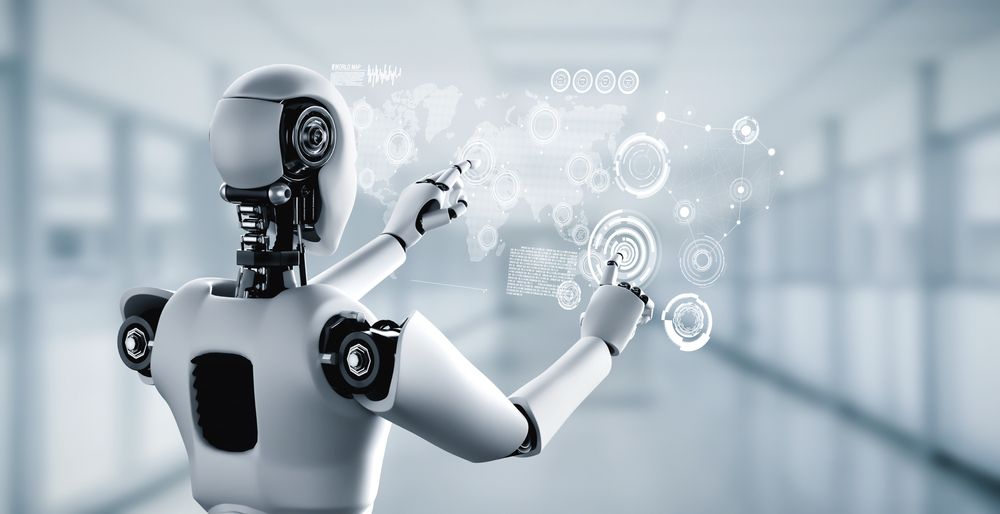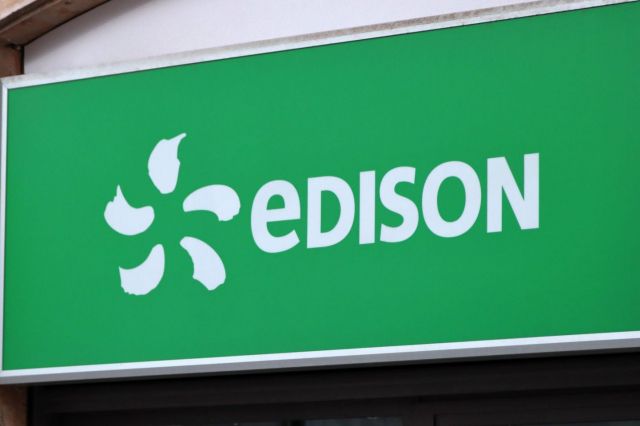Agibot IPO: how to trade Agibot shares

IPO stocks are often highly volatile, and early trading can involve rapid price swings and significant risk.
Create an account Open a demo account
When is the Agibot IPO date?
Chinese humanoid robot maker Agibot is planning to launch its initial public offering in Hong Kong in 2026, according to a Reuters report. The Shanghai-based firm is expected to file a preliminary prospectus in early 2026, with the public listing likely by the third quarter of the year, subject to market conditions and regulatory approval.
Agibot has appointed China International Capital Corp (CICC), CITIC Securities, and Morgan Stanley as joint sponsors and underwriters of the deal, signalling ambitions for one of the region’s most closely watched technology IPOs.
Scale and expected valuation
Agibot is reportedly targeting a valuation between HK$40bn and HK$50bn (approximately US$5.1-6.4bn). The company plans to sell 15-25% of its shares, potentially raising more than US$1bn, depending on pricing and demand.
Its backers include some of China’s largest institutional investors – Tencent Holdings, HongShan Capital Group (formerly Sequoia China), LG Electronics, Mirae Asset, BYD, and Hillhouse Investment – reflecting broad confidence in China’s push toward robotics and automation.
Market environment
Agibot’s IPO plans coincide with a resurgence in Hong Kong listings, which have attracted over 270 filings in 2025 – the city’s strongest year for new listings since before the pandemic.
The robotics sector, in particular, has become a focal point for Chinese capital markets, bolstered by government incentives and rapid industrial adoption.
Why IPO now?
Beijing has made robotics and automation a national priority, framing them as key to addressing labour shortages and maintaining competitiveness amid an ageing population.
For Agibot, a public listing offers several strategic benefits:
- Funding late-stage R&D and manufacturing scale-up for its humanoid and industrial robots.
- Expanding export capacity to overseas markets through joint ventures and localisation initiatives.
- Boosting brand recognition as one of China’s flagship humanoid robotics companies.
- Providing liquidity for early investors such as Tencent and HongShan while positioning the company for future acquisitions.
If successful, the IPO could make Agibot one of the largest robotics listings globally, reinforcing Hong Kong’s role as the region’s premier tech listing hub.
What is Agibot?
Agibot is a Shanghai-based robotics company developing humanoid robots and AI-driven automation solutions for industrial and commercial applications. Founded in 2023 by former Huawei engineers Deng Taihua and Peng Zhihui, Agibot aims to accelerate China’s leadership in next-generation robotics – blending mechanical precision, data-driven intelligence, and scalable production.
Agibot’s product ecosystem
The company’s flagship humanoid lines, Yuanzheng and Lingxi, are designed to perform a wide variety of real-world tasks, from industrial assembly to service-sector duties. At its training facility in Shanghai, Agibot’s robots are taught to fold clothes, make coffee, clean surfaces, and handle delicate components, showcasing advanced dexterity and adaptability.
Agibot also develops data-collection and model-training systems, which it sells to external clients. These systems allow the company to train its robots more efficiently while generating secondary revenue from data and simulation services.
Key milestones in Agibot’s history
- 2023 – Founded by Deng Taihua and Peng Zhihui, both former Huawei executives.
- 2024 – Gains national attention after President Xi Jinping visits Agibot’s facilities during a tour of Shanghai.
- 2025 – Partners with Fulin Precision Engineering in a deal worth tens of millions of yuan to deploy nearly 100 humanoid robots in manufacturing plants.
- 2025 – Completes a major strategic financing round with LG Electronics, Mirae Asset, BYD, and Hillhouse Investment.
- 2026 (expected) – Files for Hong Kong IPO to fund large-scale production and international expansion.
Agibot’s technological features
Agibot combines AI-powered visual recognition, sensor fusion, and reinforcement learning to create humanoid robots capable of adaptive movement and contextual awareness.
Its robots are designed with:
- Lightweight composite structures for improved energy efficiency.
- Modular joints that enable cost-effective maintenance and upgrades.
- Cloud-based learning systems that allow deployed robots to share behavioural data across networks.
By integrating robotics and data infrastructure, Agibot positions itself as a full-stack automation company, not just a hardware manufacturer.
How does Agibot make money?
Agibot’s revenue model reflects its dual focus on robotics hardware and AI software services.
| Revenue stream | Description |
|---|---|
| Humanoid and industrial robot sales | Direct sale of its Yuanzheng and Lingxi robots to manufacturing, logistics, and service-sector clients. |
| Data and AI model services | Licensing of training data, simulation tools, and model calibration services to third-party developers. |
| After-sales and maintenance contracts | Ongoing support agreements for calibration, component replacement, and software updates. |
| Strategic partnerships and joint ventures | Revenue from co-developed robotics deployments with industrial and automotive manufacturers. |
While the company remains in growth mode, the rapid adoption of automation across China’s manufacturing base is expected to drive recurring revenue through hardware replenishment and subscription-based software support.
What might influence the Agibot stock price?
Once listed, Agibot’s share price will likely respond to sector momentum, government policy, and the company’s execution in scaling production.
Industry growth and national policy
Agibot’s valuation will be heavily tied to China’s industrial-automation agenda. Beijing’s push for ‘intelligent manufacturing’ includes subsidies, local procurement incentives, and R&D tax relief – all potentially favourable for robotics firms.
However, investors will also monitor export restrictions and geopolitical tensions affecting component sourcing, especially for AI chips and sensors. Any policy tightening could introduce supply-chain volatility.
Competitive landscape
Agibot operates in a fast-expanding but crowded space. Its rivals include:
- Ubtech Robotics (9880.HK) – the first humanoid robot stock listed in Hong Kong.
- Unitree Robotics – planning a STAR Market IPO in Shanghai valued at up to $7bn.
- Dreame Technology and Xiaomi Robotics – diversifying into humanoid and service robots.
Agibot’s differentiation lies in its highly human-like motion systems and enterprise-level integration for factory and logistics automation. Sustained performance will depend on manufacturing efficiency and global expansion beyond China.
Technological breakthroughs and production scale
Announcements of new-generation robots, improved battery life, or enhanced motion control could act as price catalysts. Conversely, production bottlenecks or safety incidents could dampen investor sentiment.
The company’s ability to transition from prototype demonstrations to mass production at commercial cost levels will likely be one of the most scrutinised metrics post-IPO.
Market sentiment and macro factors
Hong Kong’s equities market remains sensitive to global liquidity and risk appetite. Periods of rising interest rates or volatility may dampen enthusiasm for pre-profit tech listings.
However, with strong investor interest in AI hardware and humanoid robotics, Agibot could attract both institutional and retail demand similar to that seen for Ubtech and Unitree.
You can keep your finger on the pulse of the markets with expert insight from our in-house analysts. Check out our news and analysis section for more.
How to trade Agibot shares via CFDs
As and when the Agibot launch date happens, trading its shares via contracts for difference (CFDs) allows you to speculate on its price movements – without owning the underlying stock.
How to get started
- Step 1: Choose a platform Use a trusted broker like Capital.com, offering access to thousands of shares, indices and more.
- Step 2: Open an account Provide your personal details, verify your identity, complete a short suitability questionnaire, and set your trading preferences.
- Step 3: Add funds Deposit using card or bank transfer. Start small, and manage your risk carefully.
- Step 4: Track Agibot’s performance Use charts, technical indicators and price alerts to monitor the market and spot trading opportunities.
- Step 5: Go long or short with CFDs Think the price will rise? Go long. Expect a drop? Go short. Apply stop-loss* or take-profit levels to manage your trades.
IPOs can be volatile, especially in the early days of trading. CFDs give you the flexibility to act on price swings in either direction. However, CFDs are traded on margin. Leverage above 1:1 magnifies losses and gains, which amplifies risk. Always use risk-management tools and stay informed with expert insights available on the Capital.com platform and app.
*Standard stop-losses are not guaranteed. Guaranteed stop-losses incur a fee when activated.
Which robotics and AI stocks can I trade?
Until the Agibot listing date arrives, traders can gain exposure to listed robotics and AI leaders on Capital.com:
- ABB (ABB) – global industrial automation and robotics giant.
- Nvidia (NVDA) – AI chipmaker powering robotics and autonomous systems.
- Fanuc (6954.T) – Japanese industrial robotics manufacturer.
- Tesla (TSLA) – developing humanoid robot projects alongside its EV business.
These companies offer exposure to the same growth themes – automation, AI integration, and industrial efficiency – driving investor enthusiasm for Agibot’s upcoming IPO.
FAQs
What is the Agibot IPO?
It is the planned initial public offering of Agibot, a Chinese humanoid robotics company, expected to list on the Hong Kong Stock Exchange in 2026.
How much is Agibot worth?
Agibot is reportedly targeting a valuation between HK$40bn and HK$50bn (US$5.1-6.4bn).
Who are Agibot’s main investors?
Investors include Tencent, HongShan Capital, LG Electronics, Mirae Asset, BYD, and Hillhouse Investment.
Why is Agibot going public?
The company aims to fund large-scale production, accelerate global expansion, and strengthen its position within China’s fast-growing humanoid robotics sector.
Discover more upcoming IPOs
Stay informed on upcoming IPOs, market trends, and the newest trading opportunities

Edison IPO
